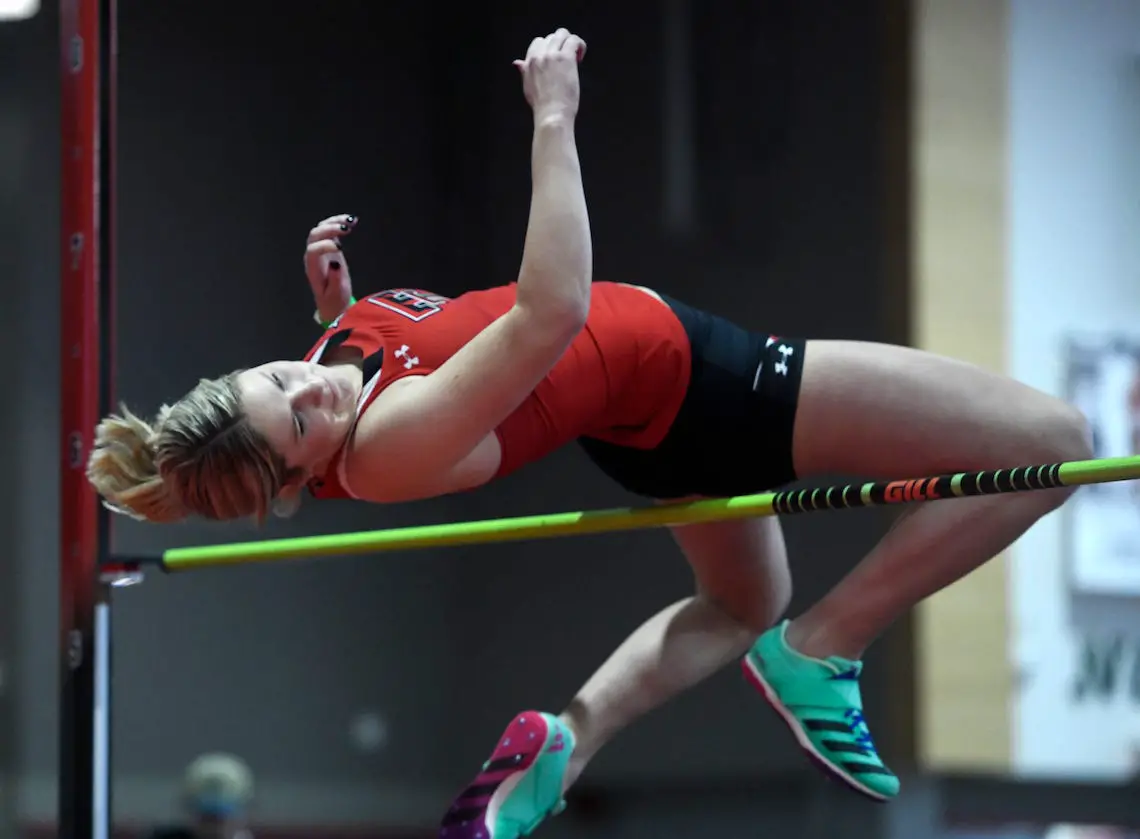
fos*bu*ry flop
What is the definition of Fosbury flop in track & field?
1. The Fosbury flop is a high jumping technique in which athletes jump backward, head-first, belly-up over the crossbar. The move is named after Dick Fosbury, the athlete who debuted the technique at the 1968 Olympic Games, winning gold.
What is the history of the Fosbury flop?
Before the Fosbury flop, jumpers primarily used a straddle approach, a derivative of the Western roll. In both techniques, athletes clear the bar parallelly feet-first and facing the bar to some degree. Variations dictate off which foot the athlete jumps, but the leg closest to the bar is the most common.
High jumper Dick Fosbury debuted the Fosbury flop for the first time while on his high school track and field team. The local paper, the Medford Mail-Tribune, noted his unusual technique with a headline that read “Fosbury Flops Over the Bar,” comparing the athlete’s jumping style to a fish flopping in a boat.
Fosbury brought his new technique to Oregon State University, where he went on to win the NCAA title in 1968. That same year, Fosbury’s technique helped him become an Olympic champion for the American team at the Mexico City Olympics.
After Dick Fosbury introduced the Fosbury flop as an Olympian, it changed the sport forever. Many high jumpers quickly adopted the technique, including 28 out of 40 competitors at the next Olympic Games in 1972. Today, the vast majority of high jumpers use the Fosbury flop.
His agent, Ray Schulte, reported that Fosbury passed away from lymphoma at age 76 on March 12, 2023.
How high did Fosbury jump?
Dick Fosbury’s personal best for the high jump was 7 feet, 4 ¼ inches (2.24 m), which was recorded in Mexico City at the 1968 Summer Olympic Games. With this jump, he set a new Olympic record and won the Olympic gold medal.
What does a Fosbury flop look like?
The Fosbury flop consists of a long, straight approach run ending in a small curve, a push off of the innermost leg, and a twisting motion so that the arms and head clear the bar first, with the back facing the bar. Then, the jumper arches their back to pull their hips over the bar, followed by a concave motion to lower the legs over. The jumper lands on their back, rolling backward.
What position is the Fosbury flop in?
During their run-up to the bar, athletes using the Fosbury flop turn to face away and jump with their back to the bar. They are facing up and moving head-first as they clear the bar. Finally, they land on their back in the landing pit on the other side.
Why does the Fosbury flop work?
According to many physicists, the Fosbury flop works because it maintains a lower level of gravity compared to the earlier methods.
Because athletes arch their backs while clearing the crossbar, their center of mass remains under the bar. Additionally, because the center of gravity needs to be lower than it would for a different approach, athletes need less vertical force than those who use a different method.
The change in landing materials from sand to a cushioned foam pad made the Fosbury flop possible. Because harder landing materials necessitated a more careful landing, a backward, head-first method had not been feasible before.
Is the Fosbury flop the best technique?
The Fosbury flop is the high jump technique most commonly used today. Some athletes still use the straddle technique. However, the Fosbury flop is considered to be easier to learn, which has contributed to its prominence in the sport.
What are the advantages of the Fosbury flop?
The Fosbury flop is considered easier to master than other high jump techniques. It also results in impressive height without having to use as much force or stretch the legs apart during the jump.

Annie Rice/USA TODAY Sports
What is the technique called that was before the Fosbury flop?
Several types of high jump techniques were used prior to the invention of the Fosbury flop, including:
Straddle technique
The straddle technique involves jumping while facing forward then twisting the body in the air to face down while clearing the bar. The body is positioned parallel to the bar as it goes over. Sometimes known as the belly roll, the straddle approach was the technique most commonly used before the adoption of the Fosbury flop.
Scissors technique
One of the earliest high jump techniques was the scissors. Athletes using this technique move one leg over the bar at the time, with the legs split, before landing on their feet. Today, the scissors technique is sometimes used to help young athletes gain confidence when they’re new to the high jump.
Eastern cut-off technique
In the Eastern cut-off technique, the jumper clears the bar with their non-takeoff leg first, followed by the other leg while facing down. This variant of the scissors also ends with athletes landing on their feet. The name derives from the technique’s East Coast origins at the New York Athletic Club.
Western roll technique
The Western roll involves clearing the car while the athlete is positioned on their side with their takeoff leg tucked under their body. It’s named for its origins on the West Coast at Stanford.
What is the difference between Fosbury flop and the straddle technique?
The approach with the Fosbury flop involves turning to jump with the athlete’s back to the bar. The straddle technique has a forward approach run with athletes jumping up while facing the bar.
Athletes using the Fosbury flop are facing up while clearing the bar, while those using the straddle technique face down. Most importantly, less force is required to achieve the required height to clear the bar when using the Fosbury flop.
Example of how Fosbury flop is used in commentary
1. Both Barshim and Tamberi have perfected the Fosbury flop and will share the gold!